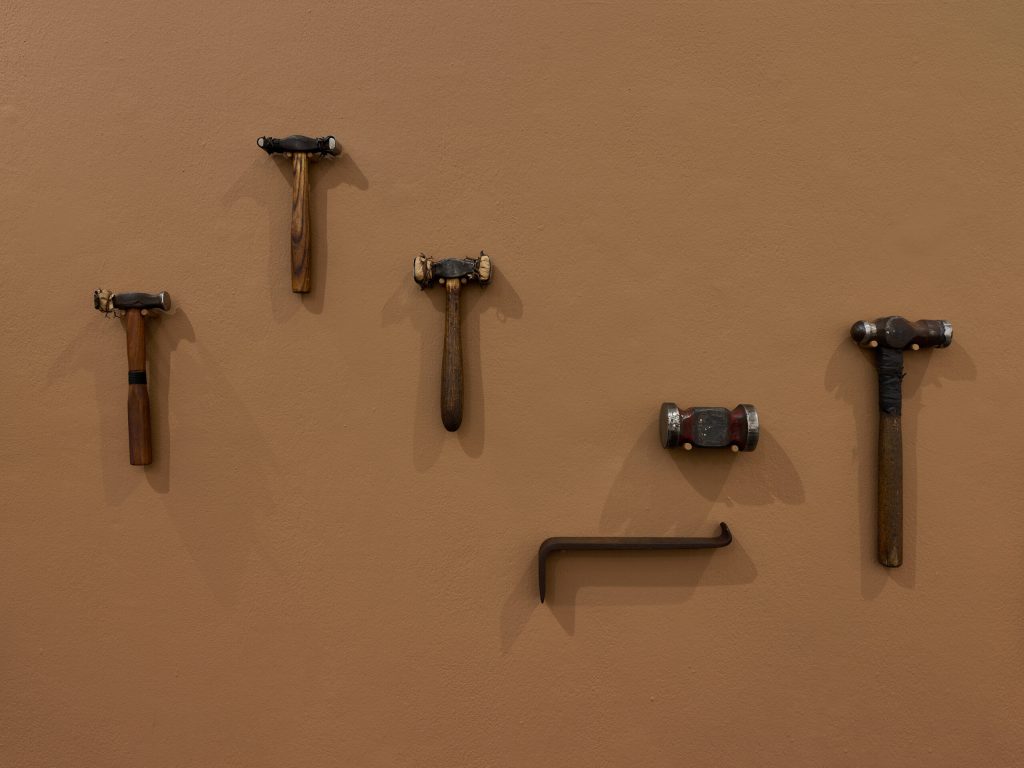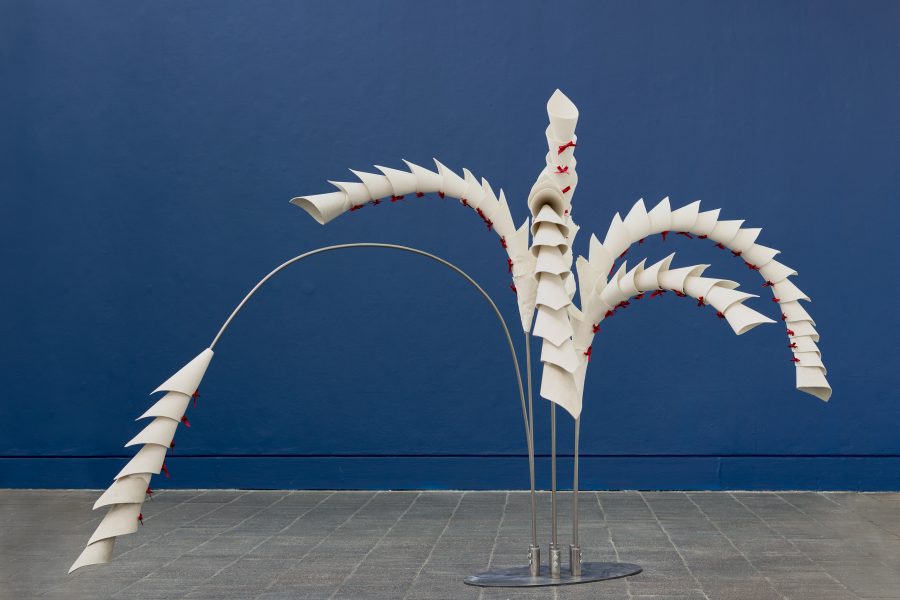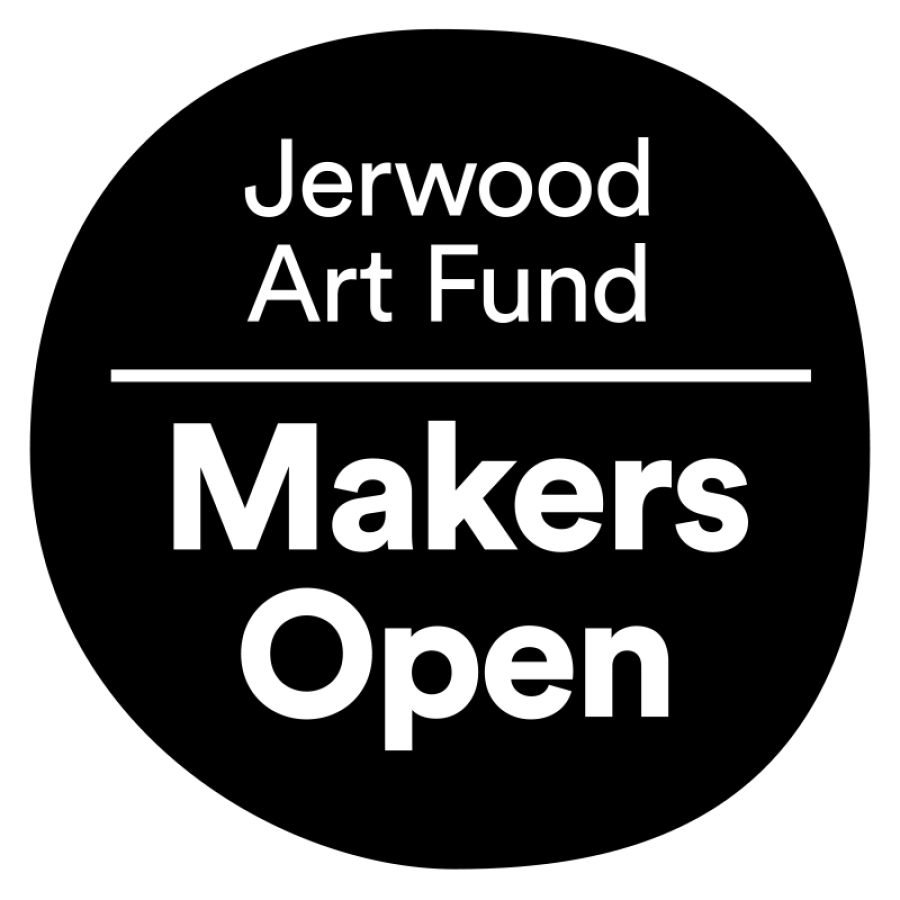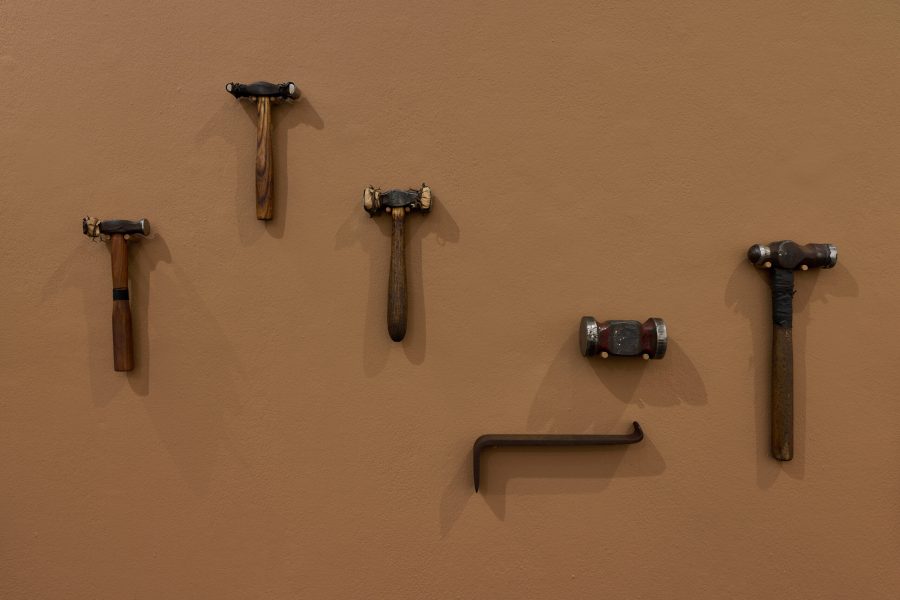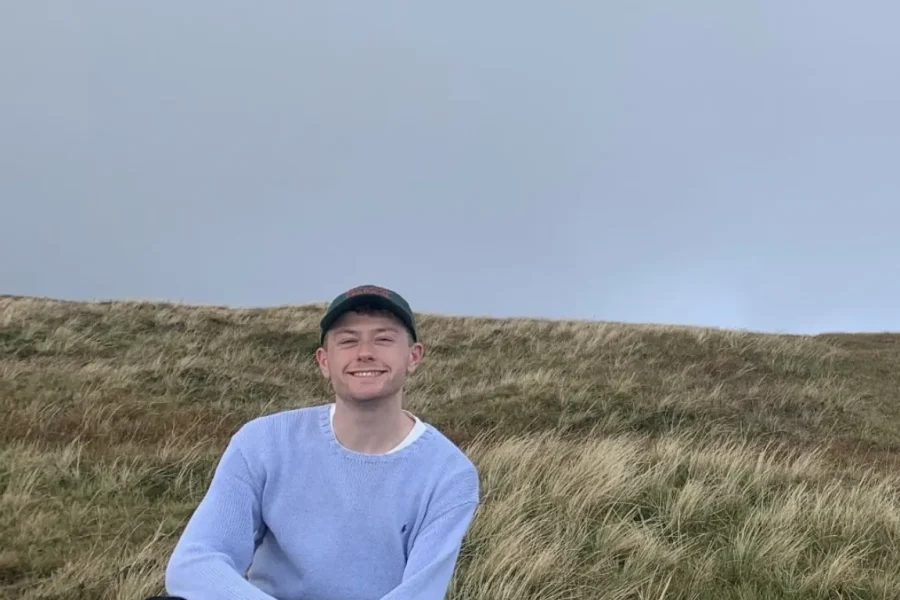A downloadable PDF version of this text is available at the bottom of this page.
Dylan Huw is Jerwood Writer in Residence from January 2022 – June 2022. This is his response to Francisca Onumah & Helena Russell’s collaborative work, Invaluable Tool commissioned as part of Jerwood Art Fund Makers Open at Jerwood Space, closing on 9 April 2022.
–
The way that the accumulation of rust makes something of its host object’s history known (visible, touchable) has an underrated narrative potential. Rust is a paradox. It tells on the past, can guide us to consider what it means to have a past. But while it can’t help but signify the past, rust itself is of the present.
The multimodal installation Invaluable Tool by Francisca Onumah and Helena Russell seizes upon the potential of rust to communicate decay and renewal alike; to make graspable the passing of epochs and the changing of guards. It offers a diverse array of approaches to telling the lived history of the silversmithing industry in Sheffield, where both artists live, privileging both the integrity of the materials used and the human stories of those who have made a living from making them into objects. This is a history to which the installation both pays tribute and seeks to interrogate, though always with a warmth and sensitivity. Its centrepiece, at least given the context of its surroundings as part of this year’s Jerwood Art Fund Makers Open exhibition, is a row of five vessels, in silver and copper, displayed in a vitrine. Surrounding these objects are photographs, audio material and ephemera, which together construct a far-reaching documentary portrait of a method of making as well as a way of life with its own unique history and culture.
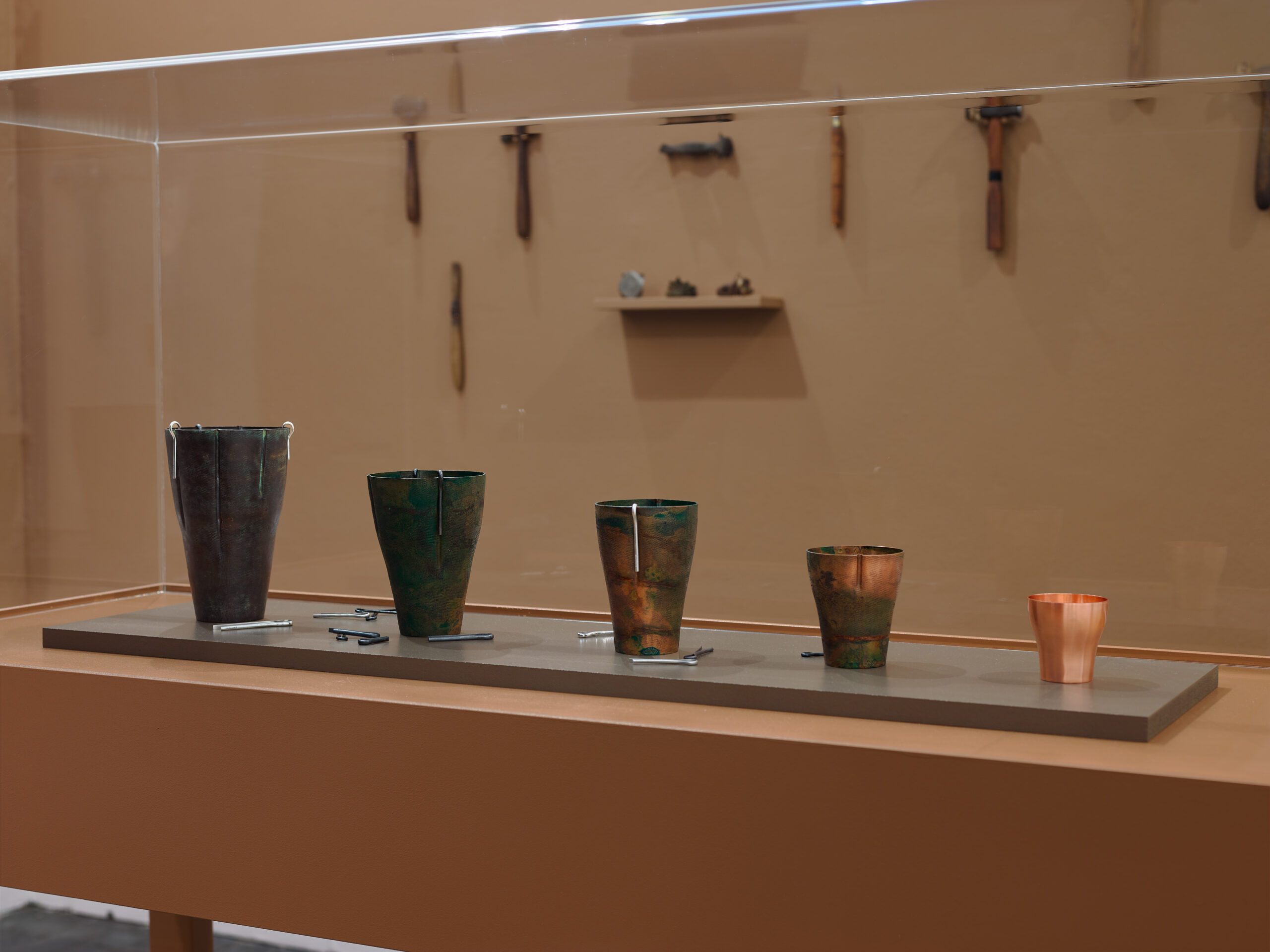
Situated at the far end of Jerwood Arts’ gallery, the installation — which is generous but not overwhelming, subtle and emphatic all at once — has a cool ambience, that of a place to spend time, to ramble, to cool down and succumb. Lengthy recordings of conversations conducted by the artists and their subjects, accessible via two pairs of headphones bookending their corner of the space, reward this patient approach. The irreverent humour and sincerity of these discussions between the young, female, multiracial artist duo and their older white male counterparts takes you out of the white-walled gallery space entirely. I could have stood there and had the discussions go on forever; I suspect many visitors will feel the same.
Displayed alongside these are the tools used to make the vessels, largely discarded or outmoded instruments which the artists lovingly repaired and repurposed. The installation thus foregrounds the process of its own making, emphasising the work of the artwork and giving the artists’ collaborative research process at least equal prominence to the ‘outcome’ of their commission, a welcome rarity in this kind of craft-based exhibition. In an interview between the artist duo and Jerwood Art Fund Makers Open co-curator Svetlana Panova included in the exhibition’s catalogue, Onumah and Russell offer an insight into how an initial moment of discovery — finding a box of unloved old tools during an annual clean-up of the starter studio at Yorkshire Artspace — gave way to the extensive research that became Invaluable Tool. The vessels were submerged for an extended period in this very box in order to create the visible rust patina, as an imaginative mode of active physical research into how their chosen materials deteriorate and accumulate rust. This history activates the space of their artwork in such a way that makes the artists’ obvious care for their medium and its lived histories viscerally present. Onumah and Russell’s presentation is one that makes space for acts of intimate care, and of reparation, in a field often defined by the functionality of the finished product. In collapsing the distinction between the craft process and the final piece(s) almost entirely, their installation has a rare storytelling acuity, bringing together the various media, modes and time periods present in their exhibition space with an intoxicating narrative finesse.
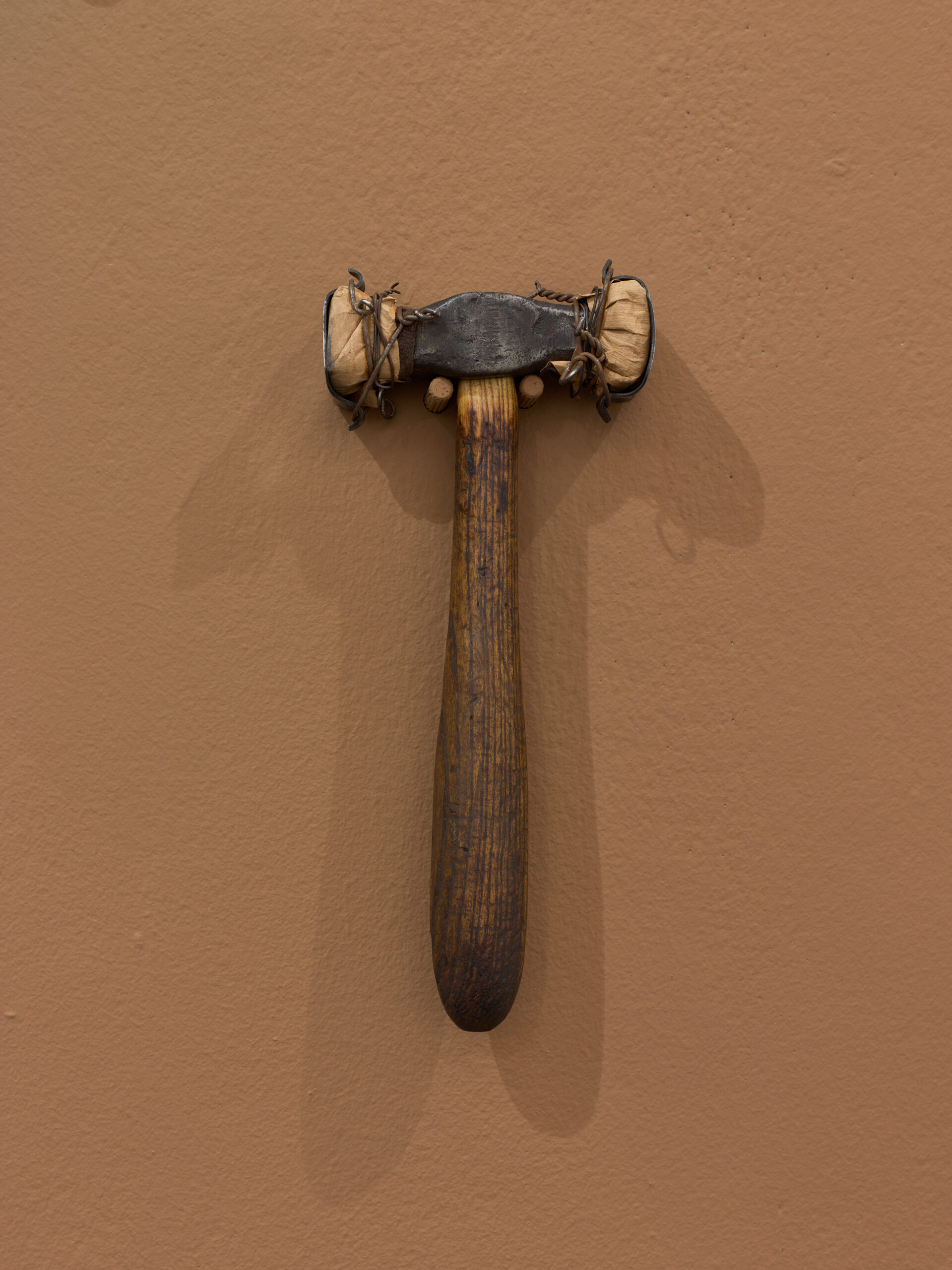
Also evoked in the artists’ interview with Panova is the figure of the little mester, a colloquial term (‘mester’ is a Sheffield variant of ‘master’) for the role of the small-scale craftsperson who focuses on a specific task before handing an object onto the next person. Collaboration itself thus emerges not only as a dominant theme in the work, but as a paradigm to be challenged, problematised and expanded upon. This is a form of collaboration not only between Onumah and Russell, or between the duo and their silversmithing forebears, but an act of collaboration across different time periods, bringing craft methods and methodologies of the past into dialogue with the concerns of the young artists in the present tense.
Invaluable Tool is the kind of project to which you could easily imagine an artist devoting a lifetime’s practice. It is precisely in its specificity of focus, on a specific practice in a specific place through specific time periods, that it is suggestive of so many timely and timeless ideas, around the meaning of collaboration, of restoration, of paying tribute and of reclamation. It succeeds as delicate craftspersonship, as research-based installation, and in telling a finely wrought story of its own becoming, one which is rich in documentary detail. If rust and deterioration are what’s at the surface of the work, it is only to illuminate how almost anything can be put to the service of making things new again. This installation is a story about how the future is sculpted into being.
